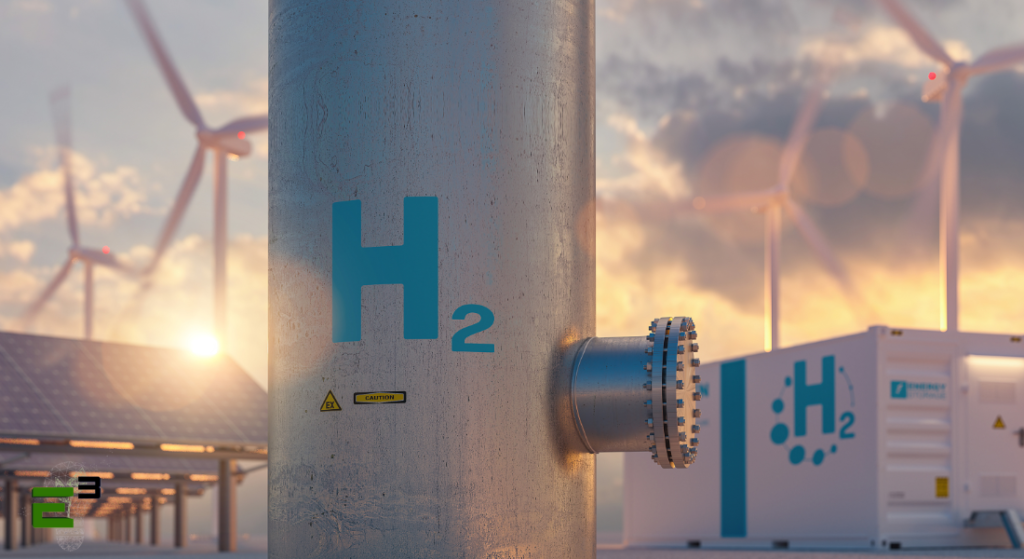In a world where the demand for energy continues to grow and environmental awareness becomes increasingly crucial, energy storage emerges as a key piece of the global energy puzzle. Traditionally, energy has been consumed almost immediately after being produced, but this approach is evolving as we recognize the importance of storing energy for future use, both to ensure a stable supply and to reduce greenhouse gas emissions.
Energy storage plays a vital role in integrating intermittent renewable energy sources such as solar and wind into the energy matrix. Without efficient storage capacity, energy produced during periods of high generation can be wasted if not consumed immediately, while energy is needed during periods of low generation. Additionally, energy storage can improve the reliability of the energy supply by stabilizing the grid and reducing the need to build more generation capacity to meet peak demand.
However, traditional methods of energy storage, such as lithium-ion batteries, have limitations in terms of capacity, lifespan, and cost. Therefore, the pursuit of emerging technologies in energy storage is more than an efficiency aspiration: it is a pressing need to drive global energy transition and address the challenges of the 21st century.

New Emerging Technologie
Solid-State Batteries
Solid-state batteries have garnered significant interest due to their promise of higher energy density, increased safety, and longer lifespan compared to conventional lithium-ion batteries. By replacing liquid electrolytes with solid materials, these batteries eliminate the risk of leaks and fires, making them ideal for a wide range of applications, from electric vehicles to large-scale renewable energy storage. However, challenges related to scalable manufacturing and cost reduction still need to be overcome for these batteries to reach their full potential.
Thermal Energy Storage
Thermal energy storage offers a unique approach to energy storage by harnessing the physical properties of materials such as molten salts and expanded graphite. These systems store energy in the form of heat and release it as needed, being particularly effective in concentrated solar power (CSP) applications and heating and cooling systems. Additionally, thermal energy storage can provide a low-cost, long-duration storage solution, complementing other energy storage technologies.
High-Temperature Superconductors
High-temperature superconductors (HTS) have the potential to revolutionize energy storage due to their ability to conduct electricity with zero electrical resistance when cooled below a certain critical temperature. These materials can be used in energy storage systems with minimal losses, enabling efficient transmission of large amounts of electrical energy. Although cooling challenges still need to be addressed, HTS represent a promising energy storage technology for modern and resilient electrical grids.
Hydrogen and Gas Storage
Hydrogen is gaining prominence as a versatile and efficient energy carrier, especially when combined with gas storage technologies such as salt caverns and high-pressure tanks. Hydrogen storage can be an ideal solution for storing large amounts of energy over long periods, making it suitable for stationary and long-duration applications. Additionally, hydrogen can be used as a direct fuel or as a feedstock in electricity generation through fuel cells, offering a clean and sustainable alternative to fossil fuels.
These emerging technologies are shaping the future of energy storage, opening up new possibilities for the global transition to a cleaner, more efficient, and resilient energy matrix. As we move towards a sustainable energy future, it is essential to continue investing in research, development, and implementation of these innovations, thereby ensuring a safe, affordable, and environmentally responsible energy supply for future generations.
Emerging technologies in energy storage present promising solutions to the challenges of transitioning to a cleaner and more sustainable energy future.
From solid-state batteries to high-temperature superconductors, these innovations offer increased efficiency, reliability, and environmental benefits, paving the way for a more resilient energy grid and reduced carbon emissions. By continuing to invest in research and development and fostering collaboration between industry, academia, and government, we can unlock the full potential of these technologies and accelerate the global shift towards renewable energy.
As a company committed to sustainability, we recognize the importance of efficient energy use in households. That’s why we offer complimentary energy audits to help enhance household efficiency and introduce renewable energy solutions. By taking advantage of these audits, you can not only save costs and resources but also contribute to environmental preservation and reduce your carbon footprint.
If you’re interested in improving the energy efficiency of your home in New York, there are various government incentives available to help you introduce renewable and clean energy solutions. These incentives include tax refunds, discounts, and financing options through programs like Clean Heat, Comfort Home, and GJGNY Financing. Our team is here to assist you in determining your eligibility and guiding you through the application process if you qualify. By taking proactive steps towards adopting renewable and clean energy, together, we can create a more sustainable and environmentally friendly future.
Schedule your FREE Energy Audit today and take the first step towards incorporating renewable and clean energy solutions into your home!



